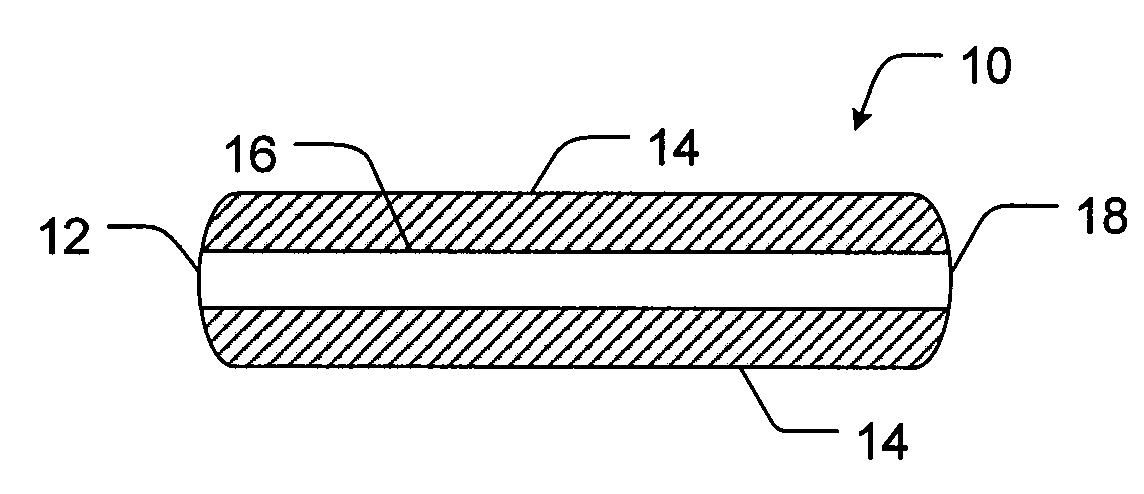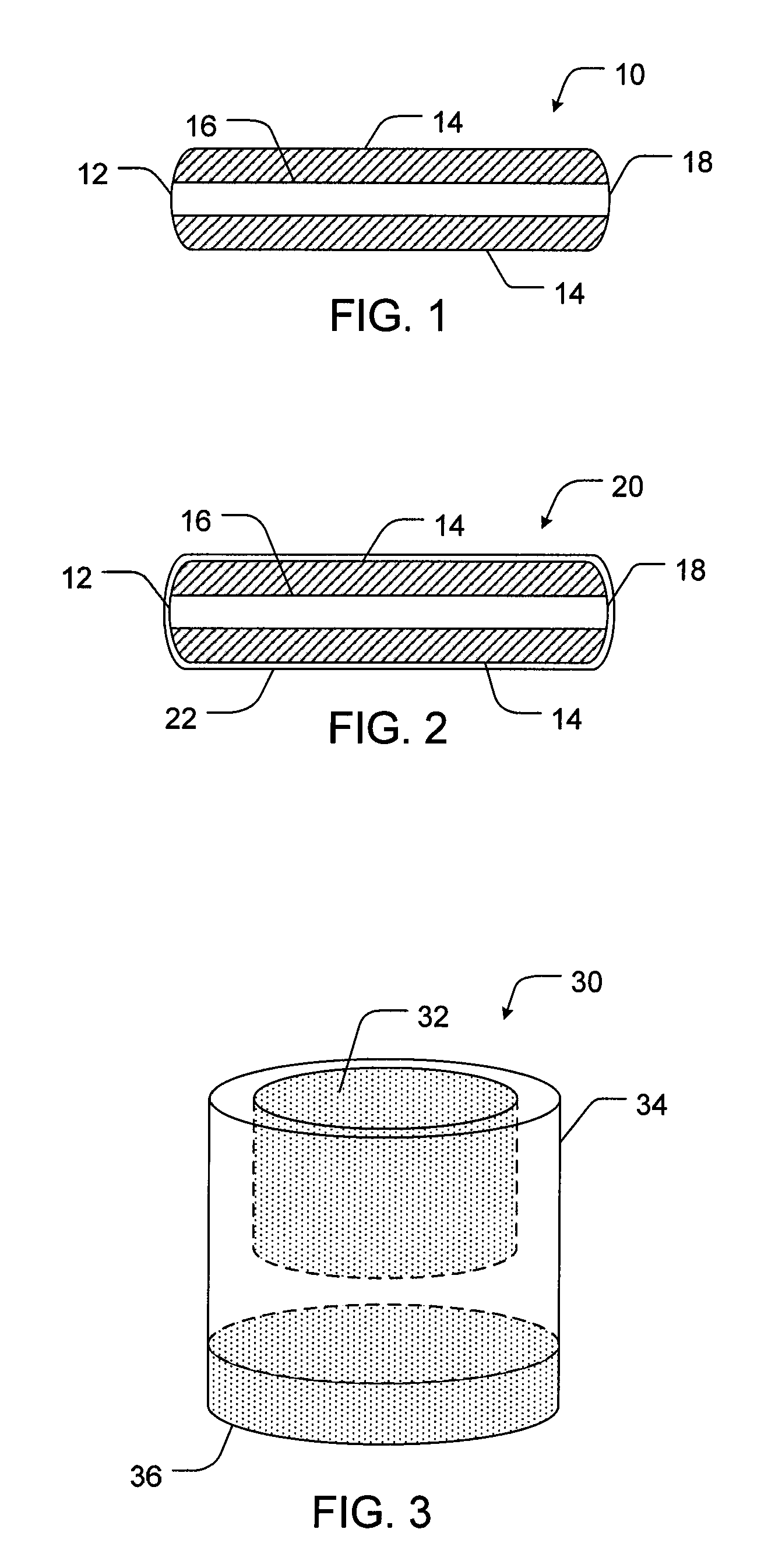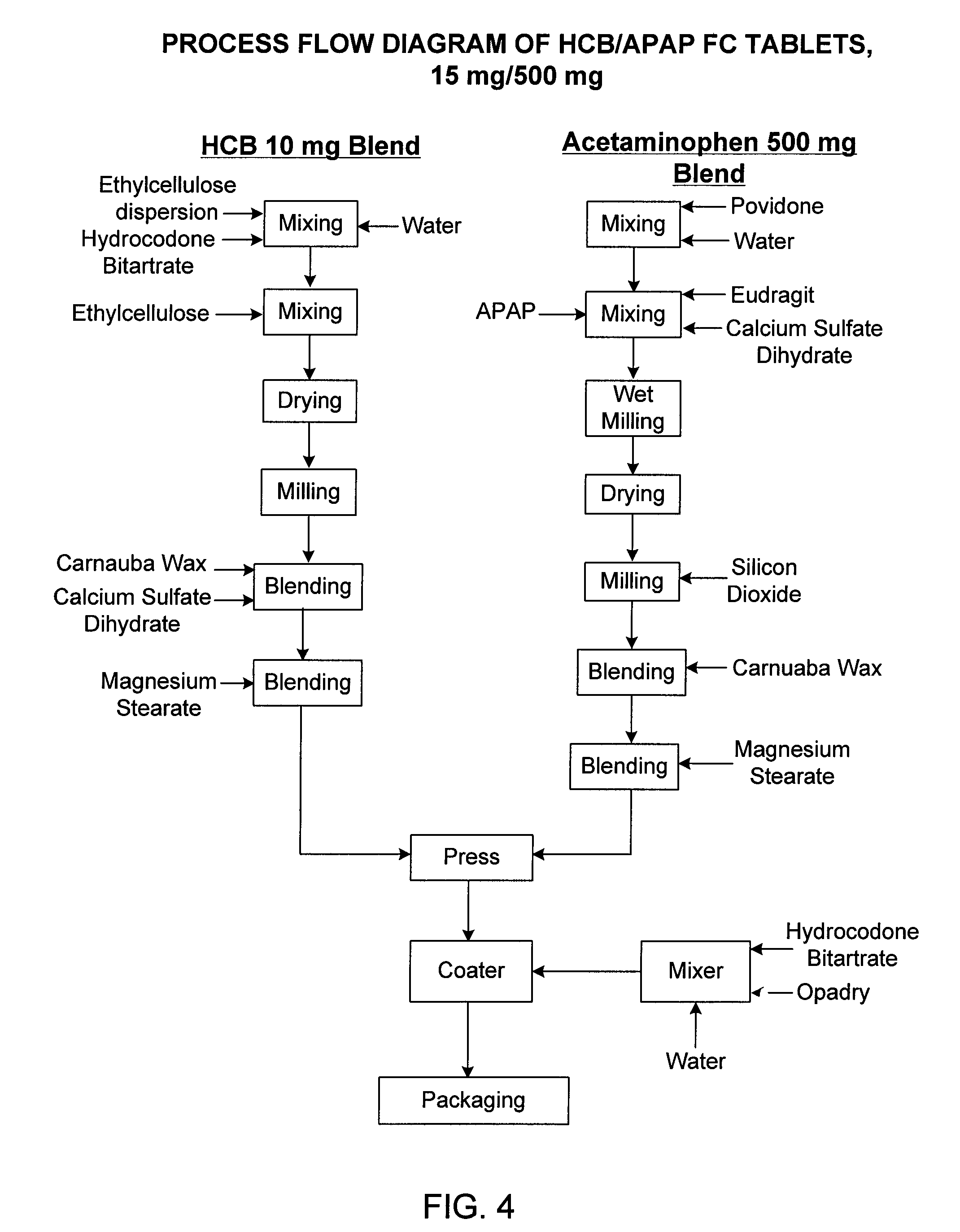Controlled Release Formulations and Associated Methods
a technology of oral dosage and controlled release, which is applied in the direction of biocide, cardiovascular disorders, drug compositions, etc., can solve the problems of complex sustained release formulations of oral dosage, and achieve the effect of limiting the alcohol-induced accelerated release of an active agen
- Summary
- Abstract
- Description
- Claims
- Application Information
AI Technical Summary
Benefits of technology
Problems solved by technology
Method used
Image
Examples
example 1
[0092]The following is an example formulation for a 10 / 500 mg hydrocodone bitartrate / acetaminophen tablet. Each of the portions exemplified below is formulated separately and compressed into a single trilayer tablet having a configuration as shown in FIG. 1. The tablet includes an extended release hydrocodone layer disposed between two extended release acetaminophen layers.
TABLE 1Hydrocodone Extended Release Layer% permg / dosagedosage unit1% per unit2ingredientunit1.035.00Hydrocodone Bitartrate, USP10.001.708.25Ethylcellulose Aqueous16.50Dispersion, NF8.2640.00Ethylcellulose, NF80.007.4836.25Carnauba Wax, NF72.502.0610.00Calcium Sulfate Dihydrate, NF20.000.100.50Magnesium Stearate, NF1.00100.00Average Weight200.001Percent (%) of each component present as a total of the average weight of the final dosage form.2Percent (%) of each component present as a total average weight of each intermediate.
TABLE 2Acetaminophen Extended Release Layersmg / dosage unit% per% perTotalunit1unit2ingredien...
example 2
[0093]The following is an example formulation for a 15 / 500 mg hydrocodone bitartrate / acetaminophen extended release tablet having a configuration as shown in FIG. 2. The 10 / 500 mg hydrocodone bitartrate / acetaminophen extended release tablet of Example 1 was coated with the immediate release hydrocodone bitartrate coating exemplified in Table 3.
TABLE 3Hydrocodone Immediate Release Coating% permg / dosagedosage unit1% per unit2ingredientunit3.1252.07Opadry II Clear30.200.508.62Hydrocodone Bitartrate, USP5.002.3531.91Opadry II White22.80100.00Average Weight58.00Total Average Weight of Film Coated Tablet969.001Percent (%) of each component present as a total of the average weight of the final dosage form.2Percent (%) of each component present as a total average weight of each intermediate.
example 3
[0094]The following is an example of the manufacturing process used to construct the tablets exemplified in Examples 1 and 2.
[0095]As is shown in FIG. 4, an extended release 10 mg blend of hydrocodone was prepared as follows: hydrocodone bitartrate was granulated in a mixer with an ethyl cellulose aqueous dispersion. Ethyl cellulose was added to the granulation in a mixer. The resulting wet granulation was dried in a dryer, milled, and blended with carnauba wax and calcium sulfate. The resulting blend was lubricated with magnesium stearate.
[0096]In a separate blending procedure, an extended release 500 mg blend of APAP was prepared as follows: APAP, calcium sulfate, and copolymers of acrylate and methacrylates (EUDRAGIT®) were mixed in a mixer. The mixture was granulated with an aqueous polyvinylpyrrolidone solution using a mixer. The wet granulation was dried in a dryer, milled with silicon dioxide, and blended with carnauba wax. The resulting blend was lubricated with magnesium st...
PUM
| Property | Measurement | Unit |
|---|---|---|
| time | aaaaa | aaaaa |
| size | aaaaa | aaaaa |
| size | aaaaa | aaaaa |
Abstract
Description
Claims
Application Information
 Login to View More
Login to View More - R&D
- Intellectual Property
- Life Sciences
- Materials
- Tech Scout
- Unparalleled Data Quality
- Higher Quality Content
- 60% Fewer Hallucinations
Browse by: Latest US Patents, China's latest patents, Technical Efficacy Thesaurus, Application Domain, Technology Topic, Popular Technical Reports.
© 2025 PatSnap. All rights reserved.Legal|Privacy policy|Modern Slavery Act Transparency Statement|Sitemap|About US| Contact US: help@patsnap.com



